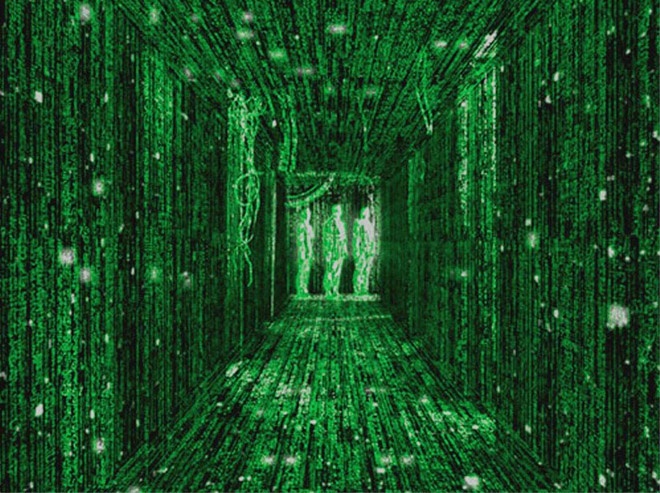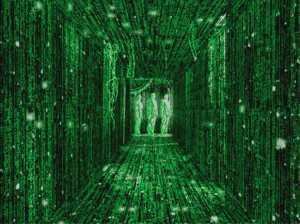
 Larry and Andy Wachowski release The Matrix, the first mind-bending installment in what will become an influential sci-fi film trilogy. Cyberpunks quickly forget that technocultural flops like Lawnmower Man and Virtuosity ever existed.
Larry and Andy Wachowski release The Matrix, the first mind-bending installment in what will become an influential sci-fi film trilogy. Cyberpunks quickly forget that technocultural flops like Lawnmower Man and Virtuosity ever existed.
The movie took cyberfiction staples like those found in William Gibson’s Sprawl trilogy — including his classic 1984 novel, Neuromancer, from which the inter-networked concept of “the matrix” is taken — and mashed them together with anime, wire-fu, postmodernism, metaphysics, Alice’s Adventures in Wonderland, Jean Baudrillard’s Simulacra and Simulations, and a torrent of other texts and contexts.
The resulting movie was a mind-bending success: The Matrix grossed $460 million in box-office receipts worldwide and became the first DVD to move more than 3 million units in the United States alone.
Along the way, it also nabbed technical Oscars for its editing and its pioneering visual effects, which exploded the use of the “bullet time” technique and upped the ante for every action film to follow. It beat out a crazily anticipated Star Wars: The Phantom Menace, which was hamstrung by the lamentable Jar Jar Binks, to win the effects statuette.
Filmed mostly in Sydney, Australia, and anchored by a hacker named Neo (Keanu Reeves in a breakthrough role) and his battle-worn leader Morpheus (Laurence Fishburne), The Matrix follows a group of intrepid rebels as they rage against their machine overlords, which farm energy from a humanity trapped in an immersive hyper-reality.
Featuring kinetic action sequences soundtracked to the industrial thump of acclaimed artists like Meat Beat Manifesto, Ministry and others, the Wachowski brothers’ film attracted ecstatic praise from cinema auteurs like Darren Aronofsky, M. Night Shyamalan and Joss Whedon. The film also utterly captivated writer Gibson, who explained in the book The Art of the Matrix that “Neo is my favorite-ever science fiction hero, absolutely.”
Because the film reflected myriad influences on its own ubiquitous mirror shades, it was often criticized for its derivativeness and even accused of plagiarism. Famed comics writer Grant Morrison asserted, “The Wachowskis nicked The Invisibles, and everyone in the know is well aware of this fact, but of course they’re unlikely to come out and say it.” Other film critics, entranced by the film’s metaphysical explorations, were nevertheless put off by its reliance on visceral action, especially in the third act.
But, like postmodernism itself, the film is a gripping amalgam of its artistic and philosophical predecessors. Overtly remixing everything from Rene Descartes to the groundbreaking anime Ghost in the Shell, The Matrix is a blinding summation of all of its influences, rather than a copycat of any one, or 100, of them. Because of this, its stature has only grown in the decade since it exploded across the screen.
Visual signifiers and sequences from The Matrix quickly infiltrated every corner of popular culture. From TV shows like The Simpsons and Family Guy to similarly postmodernist films such as Scary Movie and Shrek, directors aped Neo or his bullet-time ballet.
The Matrix franchise quickly ballooned from one mind-blowing film to three, spawning comics, novels, console and online games, as well as the stunning animated shorts of The Animatrix. By the time it was all over, the Wachowski brothers — who had only directed one feature film prior to The Matrix — were firmly ensconced as pop-culture visionaries.
[Wired – This Day in Tech]
Be the first to comment